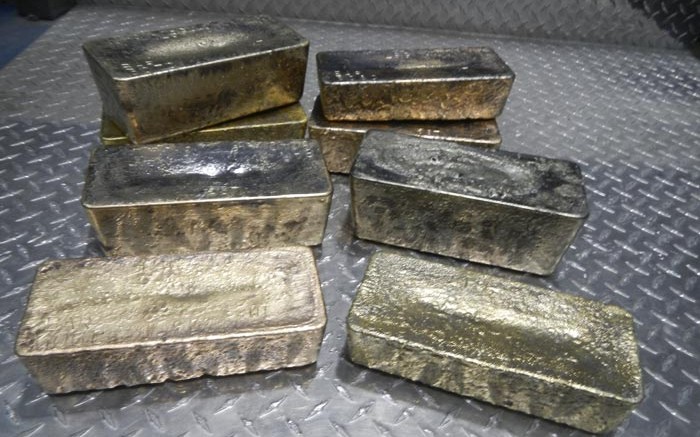Tahoe Resources (TSX: THO; NYSE: TAHO) is set to buy Toronto-based junior producer Lake Shore Gold (TSX: LSG; NYSE-MKT: LSG) in a $945-million, all-share bid, with analysts on both sides of the deal approving.
Reno, Nev.-based Tahoe — the operator of the Escobal silver mine in Guatemala and the La Arena gold mine in Peru — is offering 0.1467 of a share for each Lake Shore share. The deal values Lake Shore at $1.71 per share, a 14.8% premium to its Feb. 5 close and a 28.6% premium to its Feb. 4 close.
“It is a decent, reasonable bid,” Haywood Securities’ analyst Kerry Smith, who covers Lake Shore, writes in an email. “The premium is more than 15%, but the deal got leaked … and Lake Shore ran up 15%.”
“It seems a win-win for both companies,” Raymond James analyst Chris Thompson, who covers Tahoe, says in an interview. Both posted solid 2015 operating results and offer growth opportunities with Tahoe’s Shahuindo mine in Peru and Lake Shore’s 144 Gap zone in Timmins, Ont. “If you throw that all together and put it in one bucket, it provides a positive from a geopolitical risk perspective, or diversifying somewhat against Guatemala for Tahoe. And obviously, Lake Shore is going to benefit on the back of a strong cash-generating machine in the form of Escobal,” he says, adding that Tahoe is paying a “fair price” for the Canadian junior.
Lake Shore operates the Timmins West and Bell Creek gold mines near Timmins, Ont. Last year, it produced a total of 179,600 oz. at all-in sustaining costs of US$870 per oz., below its US$950 target. The Bell Creek mill processes ore from both operations.
This year, Lake Shore is targeting total production of 170,000 to 180,000 oz. gold. This includes 10,000 to 15,000 oz. non-commercial production from the 144 Gap zone, near the Timmins West mine. (Commercial production at 144 Gap should begin in the second half.)
Last year Tahoe cranked out 20.4 million oz. silver from Escobal and 230,436 oz. gold from La Arena. This year, it has guided production of 18 million to 21 million oz. silver at Escobal and 200,000 to 250,000 oz. gold. Tahoe’s gold production will come from La Arena (170,000 to 190,000 oz.) and the Shahuindo mine. Shahuindo, an initial 10,000-tonne-per-day operation, is set to hit commercial production in the second quarter. Once in full swing, it would be an annual 75,000 oz. producer.
If the deal closes, Tahoe’s 2016 gold count would total 370,000 to 430,000 oz., at all-in-sustaining costs of US$950 to US$1,000 oz.
“Our near-term goal will be to increase gold production to over 500,000 oz. annually, starting in 2018,” Tahoe CEO Kevin McArthur said on a conference call. The increase would come from moving 144 Gap to production; ramping up Shahuindo to 36,000 tonnes per day in 2018 to produce up to 170,000 oz. gold a year; and expanding the Bell Creek mill. The mill can treat 4,000 tonnes per day, with Tahoe looking to expand to 5,500 tonnes next year for US$30 million.
The combined company could deliver over US$350 million in operating margin a year, and modest spending across its assets could generate “industry-leading” free cash flow, McArthur added.
The combination is set to close by early April. It will require approval from two-thirds of Lake Shore’s shareholders, and from a simple majority of Tahoe’s shareholders.
The agreement includes Tahoe’s right to match any superior bids, and termination fees of $37.8 million payable to Tahoe and $20 million payable to Lake Shore, if the other party breaks the contract.
“I doubt there will be a higher bid,” Haywood’s Smith says. The companies that may be interested in Lake Shore — like Richmont Mines (TSX: RIC; NYSE-MKT: RIC), Primero Mining (TSX: P; NYSE: PPP), Iamgold (TSX: IMG), etc. — “are too small to do it.” While Goldcorp (TSX: G; NYSE: GG) is rumoured to be interested, Smith reasons, it is unlikely the major will make a move, as it has a new CEO and Lake Shore is a “pretty small” producer.
Raymond’s Thompson agrees that chances for a competing bid are low, noting majors tend to go for bigger producers, and that the intermediate players are “all pretty pregnant in terms of what they are working on.” He points out that B2Gold (TSX: BTO; NYSE-MKT: BTG) is busy expanding into Africa, Eldorado Gold (TSX: ELD; NYSE: EGO) has its “boat full” with Greece and that Lake Shore would have been a “great acquisition” for OceanaGold (TSX: OGC) if it hadn’t picked up Romarco Minerals last year.
“There aren’t many companies that have the horsepower Tahoe has … a clean balance sheet and cash-flow capability, and the need to acquire a North American asset,” Thompson says.
Once combined, Tahoe would boast four low-cost mines; a global resource of 10.4 million oz. gold across eight exploration projects in Peru and Canada; US$162 million in cash and equivalents; US$65 million in debt; and a US$2.6-billion market capitalization.
Lake Shore’s chair Alan Moon would join Tahoe’s board, and the junior’s CEO Tony Makuch would become Tahoe’s president of Canadian operations.
Tahoe plans to keep paying a monthly dividend of US2¢ per share.
On the acquisition news, Lake Shore Gold shares rose 5% to $1.57, and Tahoe shares fell 6% to $10.91.


Be the first to comment on "Tahoe bids $945M for Lake Shore Gold"